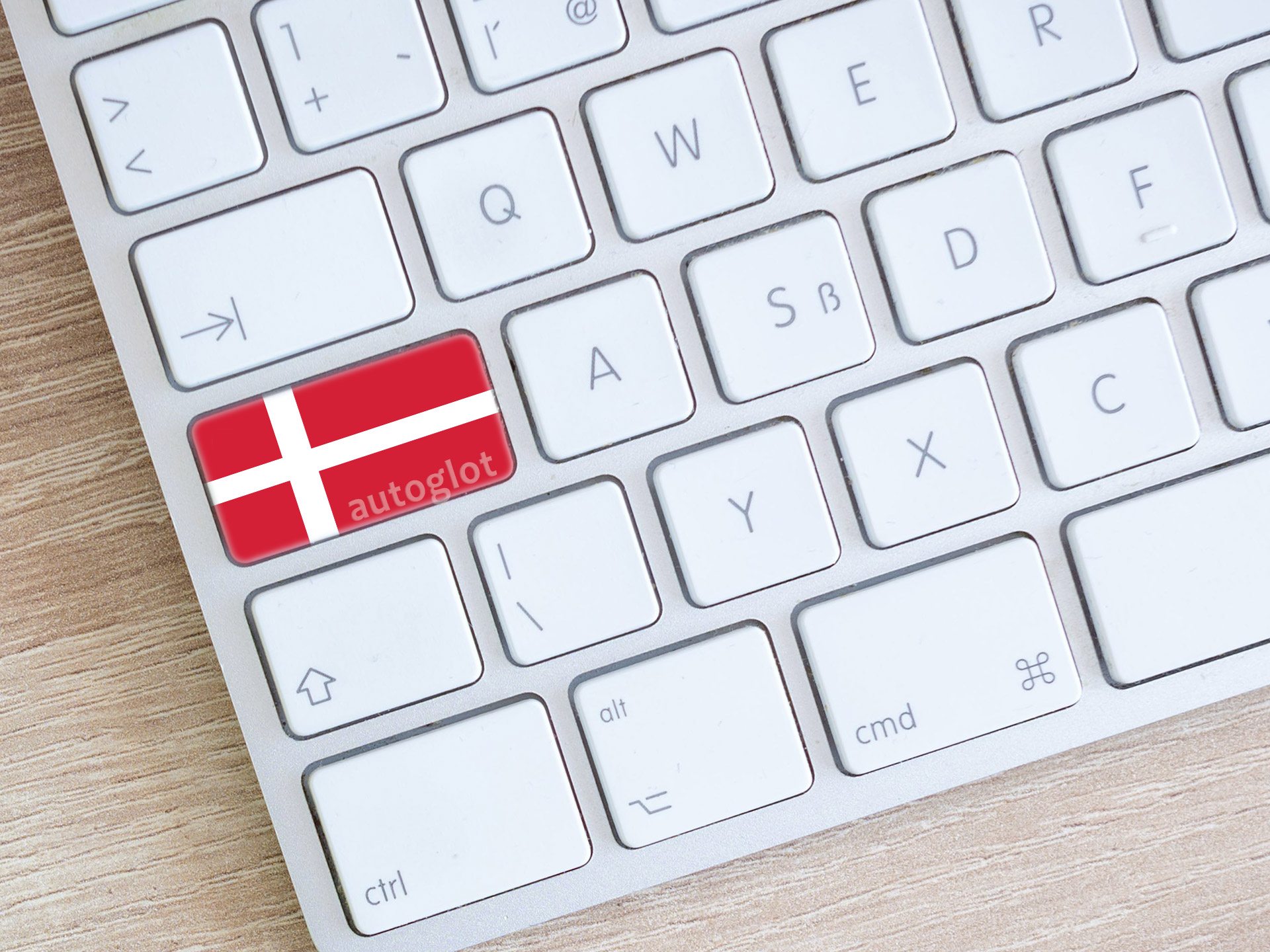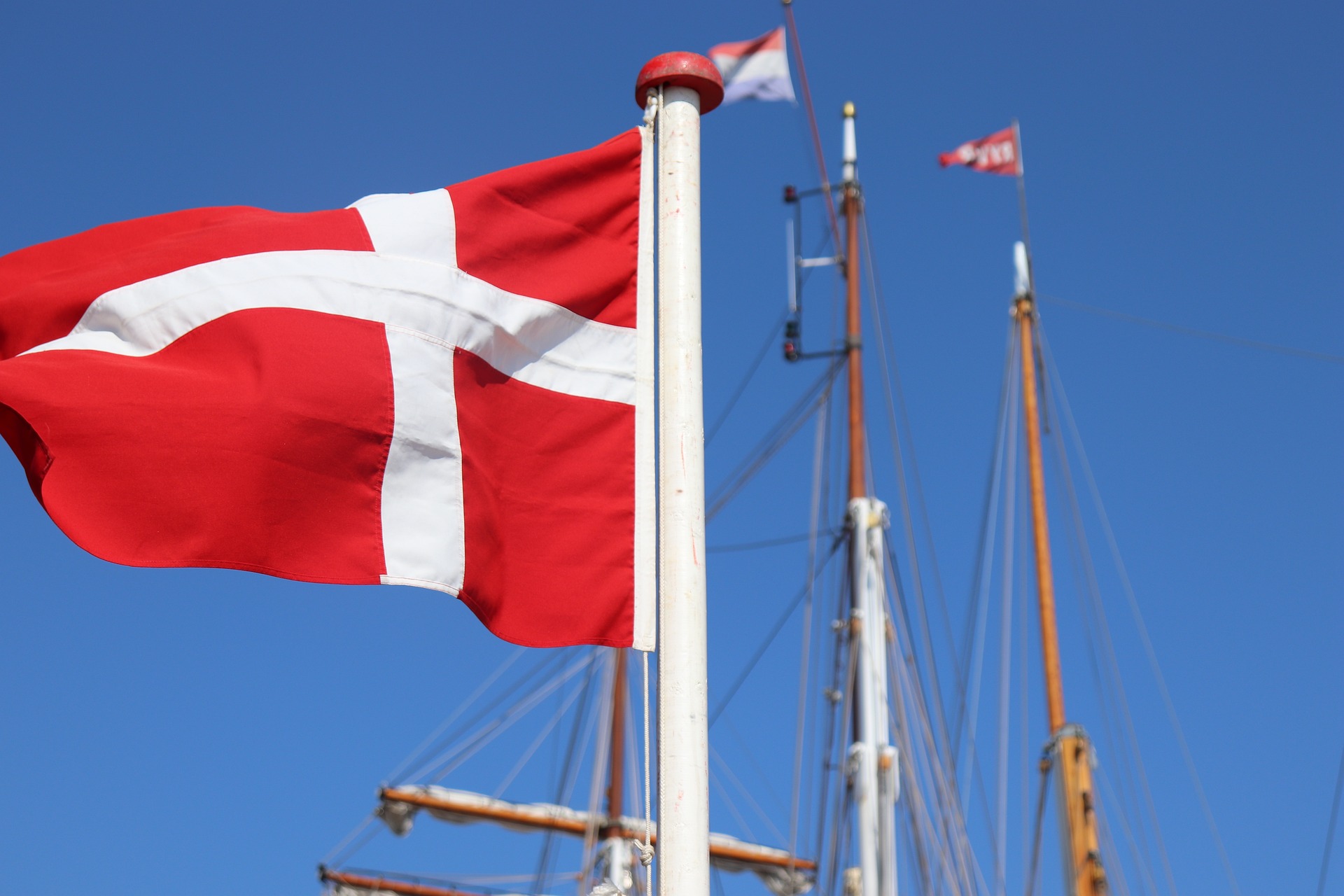
The importance of multilingual websites cannot be overstated. With the global marketplace expanding exponentially, businesses and individuals alike are recognizing the immense benefits of reaching audiences in their native languages.
One language that holds significant relevance in the context of creating multilingual websites is Danish.
Introduction to Multilingual Websites and Translation to Danish
Danish, a North Germanic language, is spoken by approximately 6 million people worldwide. While primarily used in Denmark, it also holds official status in the Faroe Islands and Greenland, making it a key language for those seeking to engage with audiences in these regions.
The Danish language boasts a rich history, dating back to the Viking Age. Over the centuries, it has evolved into a distinct linguistic entity, characterized by its unique phonology, vocabulary, and grammar. While Danish may pose some challenges to non-native speakers due to its complex vowel sounds and inflectional morphology, its relatively straightforward syntax and grammar make it an accessible language to learn.
For businesses and individuals looking to tap into the Danish-speaking market, having a localized website in Danish is essential. Not only does it demonstrate a commitment to serving Danish-speaking audiences, but it also enhances user experience and fosters trust and credibility.
Moreover, with the increasing prevalence of Danish content on the internet, having a Danish version of your website can significantly expand your online reach. Whether you’re a multinational corporation or a small business looking to expand internationally, translating your WordPress site into Danish opens up a world of opportunities for growth and success.
This article explores the process of translating a WordPress site into Danish, highlighting the benefits and challenges along the way. We’ll also introduce a powerful tool, the Autoglot WordPress translation plugin, which offers a seamless solution for automating the translation process and ensuring your website speaks to Danish audiences effectively. So, let’s delve into the world of Danish translation and discover how you can unlock the full potential of your WordPress site in the Danish-speaking market.
Danish Language
Danish, a member of the North Germanic branch of the Germanic languages, holds a unique position among its linguistic counterparts. With its roots deeply embedded in Scandinavian history, Danish has evolved over centuries into a language that is both distinctive and captivating.

History of Danish Language
The history of the Danish language can be traced back to the Viking Age, around the 8th to 11th centuries. During this time, Old Norse, the precursor to modern Scandinavian languages including Danish, Norwegian, and Swedish, was spoken throughout the Nordic region. As Norse settlers spread across the region, their language gradually evolved into what we now recognize as Danish.
Throughout the medieval period, Danish underwent significant changes, influenced by contact with neighboring languages and dialects. The introduction of Christianity and the adoption of Latin script further shaped the language, leading to the development of Middle Danish.
By the 16th century, Danish had established itself as the dominant language of administration, literature, and culture in Denmark and its territories. The standardization of Danish spelling and grammar during this period laid the foundation for the modern Danish language that we know today.
Structure, Vocabulary, and Grammar of Danish
Danish, like other Scandinavian languages, exhibits a relatively simple grammatical structure compared to many other European languages. It follows a subject-verb-object word order in most sentences, with nouns inflected for number and definiteness.
- One of the most distinctive features of Danish is its pronunciation, characterized by a wide range of vowel sounds and a unique stød or glottal stop. These phonetic features give Danish its melodic and rhythmic quality, distinguishing it from other Germanic languages.
- The vocabulary of Danish is derived from a variety of sources, including Old Norse, Low German, and Latin. While many words may appear unfamiliar to speakers of English or other Germanic languages, Danish learners often find commonalities and cognates that facilitate vocabulary acquisition.
- Grammar in Danish is relatively straightforward, with few inflectional endings compared to languages like German or Latin. Danish nouns are inflected for number and definiteness, while verbs conjugate for tense and mood. The use of definite and indefinite articles is also a prominent feature of Danish grammar, influencing word order and sentence structure.
Overall, while Danish may present some challenges to learners, its rich history, unique phonology, and straightforward grammar make it an intriguing and rewarding language to study and master. Whether you’re drawn to its cultural heritage, its literary traditions, or its modern relevance, Danish offers a linguistic tapestry waiting to be explored and embraced.
Danish-speaking People
The Danish language, with its roots deeply embedded in Scandinavian history, holds significance not only as a linguistic medium but also as a cultural identifier for millions of people worldwide. Understanding the demographics of Danish-speaking populations provides valuable insights into the reach and influence of the language across different regions and communities.

Population that Speaks Danish
Danish is primarily spoken in Denmark, where it serves as the official language of the country. With a population of approximately 6 million people, Denmark boasts a vibrant linguistic landscape, where Danish serves as the primary mode of communication in both formal and informal settings.
In addition to Denmark, Danish-speaking communities can also be found in the Faroe Islands and Greenland, both of which are autonomous territories within the Kingdom of Denmark. While these regions have their own distinct cultural identities, Danish remains an essential language for government, education, and commerce.
Danish-speaking Countries
While Denmark, the Faroe Islands, and Greenland are the primary regions where Danish is spoken, the language also holds relevance in other parts of the world. Due to historical ties and migration patterns, Danish-speaking communities can be found in countries such as the United States, Canada, Sweden, and Norway, among others.
Countries where Danish is Official Language
Aside from Denmark, Danish holds official status in the Faroe Islands and Greenland, where it is used in government proceedings, education, and media. These territories maintain a strong connection to Denmark while also preserving their unique cultural identities, making Danish an integral part of their linguistic heritage.
Countries where People Speak Danish
In addition to regions where Danish holds official status, Danish-speaking communities can be found in various countries around the world. Whether due to historical migration, cultural exchange, or economic opportunities, Danish speakers have established vibrant communities in countries such as the United States, Canada, Australia, and the United Kingdom.
Overall, while Danish may be primarily associated with Denmark, its influence extends far beyond national borders. From autonomous territories to diaspora communities, Danish-speaking populations contribute to the global diversity of languages and cultures, enriching the world with their unique perspectives and traditions.
As such, understanding the demographics of Danish-speaking people sheds light on the global reach and importance of this fascinating language.
Danish on the Internet: How Widespread Is It?
In an increasingly interconnected world, the internet serves as a gateway to global communication, commerce, and culture. As such, the presence of different languages on the internet reflects the diversity and richness of human expression. Danish, with its unique linguistic heritage and cultural significance, plays a vital role in shaping the digital landscape and connecting Danish-speaking communities worldwide.

How Widespread Danish is on the Internet
While Danish may not be as widely spoken as some other languages on the internet, it nonetheless maintains a significant presence in the digital sphere. Websites catering to Danish audiences cover a wide range of topics, including news, entertainment, e-commerce, and education. Danish users engage with online content in their native language, seeking information, entertainment, and social interaction in Danish.
Moreover, the Danish government and various organizations actively promote digital literacy and online services in Danish, ensuring that Danish speakers have access to essential resources and information online. From official government websites to educational platforms and social media networks, Danish content is readily available for those seeking to engage with the online world in their native language.
Why it is Important to Have a Danish Version of Your Website
For businesses and individuals seeking to reach Danish-speaking audiences, having a Danish version of their website is essential. Not only does it demonstrate a commitment to serving Danish users, but it also enhances user experience and facilitates communication in their preferred language. By providing content in Danish, website owners can effectively engage with Danish audiences, build trust and credibility, and ultimately drive traffic and conversions.
Furthermore, having a Danish version of your website can improve your visibility and relevance in Danish-speaking markets. Search engines prioritize localized content, meaning that websites in Danish are more likely to appear in search results for Danish-language queries. This can significantly boost your online visibility and attract Danish users who are actively seeking products, services, or information in Danish.
The presence of Danish on the internet underscores the importance of catering to Danish-speaking audiences online. Whether you’re a business looking to expand into Danish markets or an individual seeking to connect with Danish communities, having a Danish version of your website is crucial for success in the digital age.
By embracing Danish language and culture online, you can tap into a vibrant and dynamic community of Danish speakers and unlock new opportunities for growth and engagement.
How to Translate a WordPress site to Danish
Translating a WordPress site to Danish opens up a world of possibilities for reaching Danish-speaking audiences and expanding your online presence. Whether you’re a business looking to tap into the Danish market or an individual blogger seeking to connect with Danish readers, offering your content in Danish can significantly enhance user experience and engagement.
Here are some major ways of translating WordPress sites to Danish and introduce the Autoglot WordPress translation plugin as a powerful tool for automating the translation process.
- Manual Translation. One traditional approach to translating a WordPress site to Danish is through manual translation. This involves hiring professional translators or doing the translation work yourself, manually translating each page, post, and element of your website into Danish. While manual translation ensures accuracy and quality, it can be time-consuming and resource-intensive, especially for larger websites with extensive content.
- Using Translation Plugins. Another option for translating WordPress sites to Danish is by using translation plugins. WordPress offers a variety of translation plugins that allow you to translate your website content into multiple languages, including Danish. These plugins typically provide a user-friendly interface for managing translations, allowing you to easily translate pages, posts, menus, and other elements of your website.
- Autoglot WordPress Translation Plugin. One standout option among translation plugins is the Autoglot WordPress translation plugin. Autoglot offers a unique solution for automatically translating your WordPress site into Danish and other languages, eliminating the need for manual translation or multiple plugins.
Why Autoglot? Key advantages of Autoglot
Autoglot utilizes advanced machine translation technology to translate your website content quickly and accurately. With support for over 100 languages, including Danish, Autoglot ensures that your website speaks to Danish audiences effectively, capturing the nuances and nuances of the Danish language.
Moreover, Autoglot seamlessly integrates with your WordPress site, allowing you to translate your entire website with just a few clicks. The plugin automatically detects the language of each page and translates it into Danish, preserving the layout and formatting of your original content.
By leveraging the power of Autoglot, you can save time and resources on translation efforts while ensuring that your website resonates with Danish audiences. Whether you’re translating a small blog or a large e-commerce site, Autoglot offers a reliable and efficient solution for reaching Danish users and expanding your online reach.
Translating a WordPress site to Danish opens up new opportunities for engagement and growth in Danish-speaking markets. Whether you choose manual translation, traditional translation plugins, or innovative solutions like Autoglot, investing in Danish translation can help you connect with Danish audiences, build trust and credibility, and ultimately achieve your online goals.
Step-by-Step Guide to Translating a WordPress site to Danish
Translating your WordPress site to Danish is a straightforward process, especially with the help of translation plugins like Autoglot. In this step-by-step guide, we’ll walk you through the process of translating your WordPress site to Danish using Autoglot, from installation to checking the results of automatic translation.
Step 1. Plugin Installation and Activation.
- The first step is to install and activate the Autoglot WordPress translation plugin on your website.
- You can do this by navigating to the “Plugins” section in your WordPress dashboard, clicking on “Add New,” and searching for “Autoglot.”
- Once you find the plugin, click “Install Now” and then “Activate” to activate the plugin on your site.
You may also download Autoglot directly from the official WordPress plugins repository.
Source
Step 2. Registration in Autoglot Control Panel
- After activating the Autoglot plugin, you’ll need to register for an account in the Autoglot Control Panel.
- You can do this by clicking on the “Autoglot” menu in your WordPress dashboard and selecting “Setup.”
- From there, click on the “Registration” link and follow the prompts to register for an account.
Autoglot Control Panel lets you control your translation expenses, track usage and order new translation packages.
Source
Step 3. Plugin Configuration
- Once you’ve registered for an account, you’ll need to configure the Autoglot plugin settings to translate your website into Danish.
- In the Autoglot settings, navigate to the “Settings” tab and enter your free API key from Autoglot Control Panel.
- You can also customize other settings, such as language switcher, flag preferences, etc.
Step 4. Choosing Danish Among Languages
- After configuring the plugin settings, you can start the translation process by selecting Danish as the target language for translation.
- Simply navigate to the page or post you want to translate, and you’ll see the content translated into Danish using Autoglot.
Step 6. Checking the Results of Automatic Translation
- Once the translation process is complete, it’s essential to review the results to ensure accuracy and quality.
- While Autoglot provides accurate translations, it’s always a good idea to double-check the translated content for any errors or discrepancies.
- You can do this by reviewing the translated pages or posts on your website and making any necessary corrections.
By following these simple steps, you can translate your WordPress site to Danish quickly and efficiently using the Autoglot WordPress translation plugin. Whether you’re a business looking to reach Danish audiences or an individual blogger seeking to connect with Danish readers, Autoglot offers a reliable and user-friendly solution for translating your website into Danish and expanding your online reach.
Conclusion: Challenges and Benefits of Translating WordPress Sites to Danish
Translating your WordPress site to Danish offers a multitude of benefits, from expanding your online reach to enhancing user experience and engagement with Danish-speaking audiences. This article has explored the importance of catering to Danish audiences online and provided insights into the demographics of Danish-speaking populations worldwide.
This has also highlighted the significance of Danish on the internet and why having a Danish version of your website is essential for connecting with Danish users and achieving your online goals. Whether you’re a business looking to tap into Danish markets or an individual seeking to connect with Danish communities, translating your WordPress site to Danish is a strategic move that can yield significant dividends in terms of visibility, credibility, and engagement.
We recommend the Autoglot WordPress translation plugin as a powerful tool for automating the translation process and ensuring accurate and efficient translations of your website content into Danish.
With Autoglot, you can seamlessly translate your WordPress site into Danish and reach Danish as well as worldwide audiences with ease, saving time and resources on translation efforts.
Source
By following the step-by-step guide provided in this article, you can translate your WordPress site to Danish quickly and effectively, unlocking new opportunities for growth and success in Danish-speaking markets. Whether you’re translating a small blog or a large e-commerce site, Autoglot offers a reliable and efficient solution for reaching Danish users and expanding your online reach.
In conclusion, translating your WordPress site to Danish is a strategic investment that can pay off in terms of increased visibility, engagement, and conversion rates. By embracing Danish language and culture online, you can connect with Danish audiences, build trust and credibility, and ultimately achieve your online goals. So why wait? Take the first step towards reaching Danish users today and embark on a journey of success in Danish-speaking markets with Autoglot.



